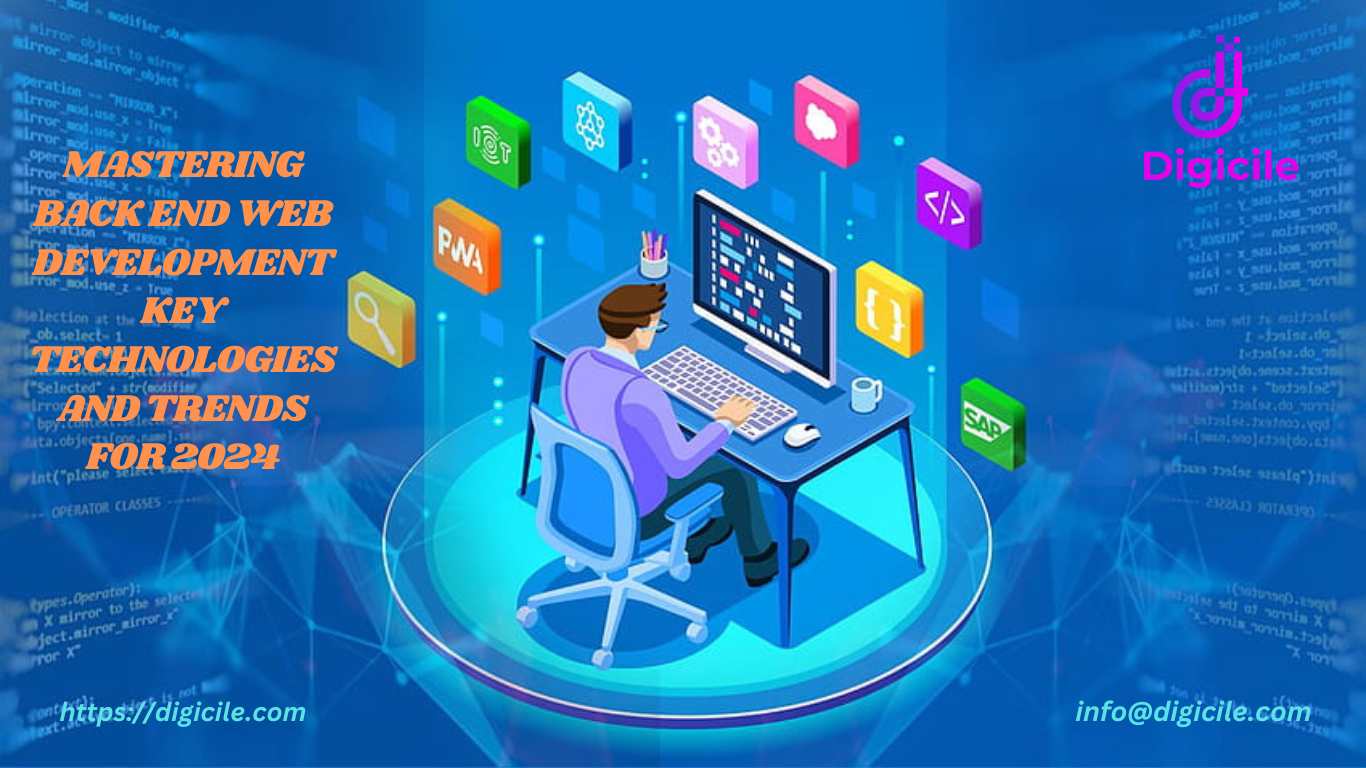As the digital landscape continues to evolve, mastering back end web dev has become more crucial than ever. Back end web development is the backbone of any web application, handling server-side operations, databases, and application logic. As we progress into 2024, several key technologies and trends are shaping the future of back end web development. Here’s a comprehensive guide to help you navigate these advancements and enhance your back end development skills.
1. Understanding Back End Web Development
Back end web development involves everything that happens on the server side of a web application. This includes managing databases, server logic, authentication, and APIs that connect the front end to the back end. Unlike front end development, which focuses on user interfaces and user experience, back end development ensures that the server, application, and database communicate effectively to deliver a seamless user experience.
2. Key Technologies in Back End Web Development for 2024
Programming Languages:
- Node.js: Leveraging JavaScript on the server side, Node.js continues to be popular for its non-blocking, event-driven architecture, which is ideal for handling concurrent requests. Its ecosystem, including npm (Node Package Manager), offers a vast array of libraries and tools.
- Python: Known for its simplicity and readability, Python remains a favorite for back end development. Frameworks like Django and Flask provide powerful tools for building robust and scalable applications.
- Java: Java is a longstanding player in back end development, known for its portability and performance. Frameworks such as Spring Boot make it easier to build and deploy enterprise-level applications.
- Go (Golang): Developed by Google, Go is praised for its efficiency and performance. It’s increasingly used in scenarios where high concurrency and fast execution are required, such as in microservices architecture.
- Rust: Rust’s focus on safety and performance makes it an emerging choice for back end development. Its memory safety features and high performance are beneficial for building reliable and efficient applications.
Frameworks and Libraries:
- Express.js: For Node.js developers, Express.js provides a minimal and flexible framework for building web applications and APIs. It simplifies routing and middleware integration, streamlining development processes.
- Django: Django is a high-level Python framework that encourages rapid development and clean, pragmatic design. It includes built-in features such as an ORM (Object-Relational Mapping), authentication, and admin interfaces.
- Spring Boot: A Java-based framework, Spring Boot simplifies the development of production-ready applications by providing convention over configuration and a wide range of built-in functionalities.
- Flask: Flask is a lightweight Python framework that offers flexibility and simplicity. It’s suitable for small to medium-sized projects where developers prefer more control over components.
Databases and Data Management:
- SQL Databases: Traditional SQL databases like MySQL, PostgreSQL, and Microsoft SQL Server remain essential for structured data storage. They offer powerful querying capabilities and transactional support.
- NoSQL Databases: NoSQL databases, such as MongoDB, Cassandra, and Redis, are designed for unstructured or semi-structured data. They provide scalability and flexibility, particularly useful for handling large volumes of diverse data.
- GraphQL: An alternative to REST APIs, GraphQL allows clients to request exactly the data they need. It provides a more efficient and flexible approach to data retrieval, especially in complex applications with multiple data sources.
DevOps and Cloud Services:
- Docker: Docker enables containerization, allowing developers to package applications and their dependencies into containers. This ensures consistency across different environments and simplifies deployment.
- Kubernetes: Kubernetes is a container orchestration platform that automates the deployment, scaling, and management of containerized applications. It’s essential for managing microservices architectures and complex deployments.
- AWS, Azure, and Google Cloud: Cloud platforms offer a range of services for hosting, scaling, and managing applications. They provide tools for database management, serverless computing, and CI/CD pipelines.
Security Practices:
- Authentication and Authorization: Implementing robust authentication mechanisms (e.g., OAuth, JWT) and authorization protocols is crucial for securing applications and managing user access.
- Encryption: Ensuring data security through encryption, both in transit (using SSL/TLS) and at rest, is essential for protecting sensitive information.
- Security Best Practices: Following security best practices, such as input validation, secure coding practices, and regular security audits, helps mitigate vulnerabilities and threats.
3. Trends in Back End Web Development for 2024
Microservices Architecture: Breaking down applications into smaller, independent services that can be developed, deployed, and scaled individually. This approach enhances flexibility, scalability, and maintainability.
Serverless Computing: Serverless architectures allow developers to build and deploy applications without managing servers. Cloud providers handle scaling and infrastructure management, reducing operational overhead.
API-First Development: Emphasizing the design and development of APIs before the actual application. This approach ensures that APIs are well-defined, consistent, and easily integrable.
Edge Computing: Processing data closer to the source (e.g., IoT devices) to reduce latency and improve performance. Edge computing is particularly relevant for real-time applications and data-intensive tasks.
AI and Machine Learning Integration: Incorporating AI and machine learning capabilities into back end systems for tasks such as data analysis, predictive analytics, and automation.
Improved DevOps Practices: Continuous Integration/Continuous Deployment (CI/CD) pipelines, automated testing, and monitoring are becoming standard practices to streamline development and deployment processes.






